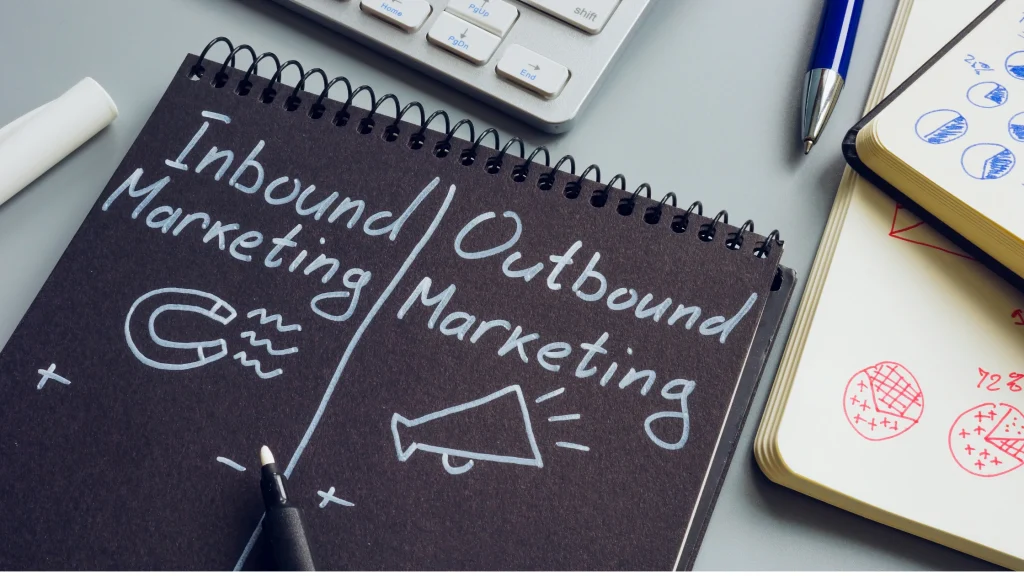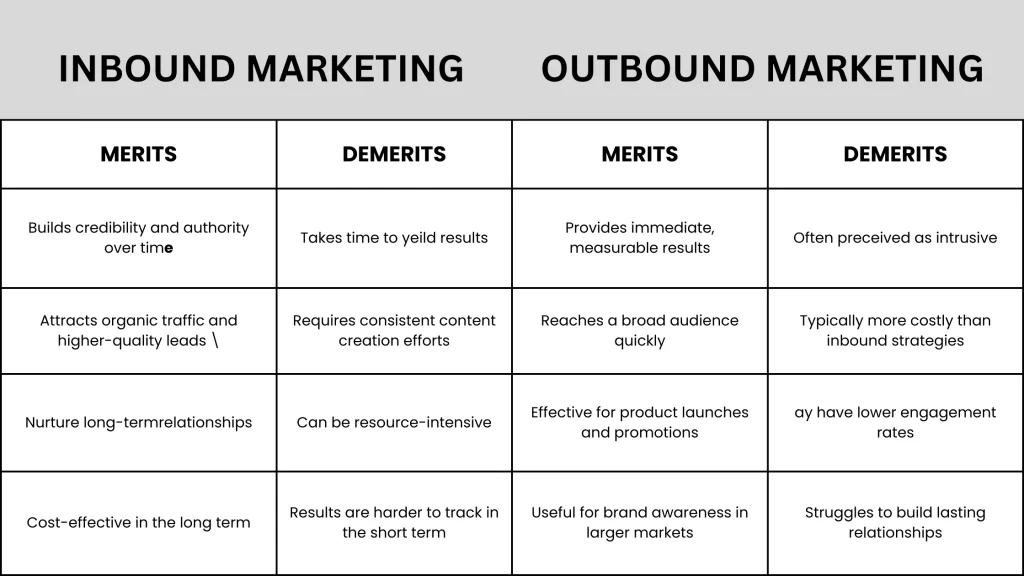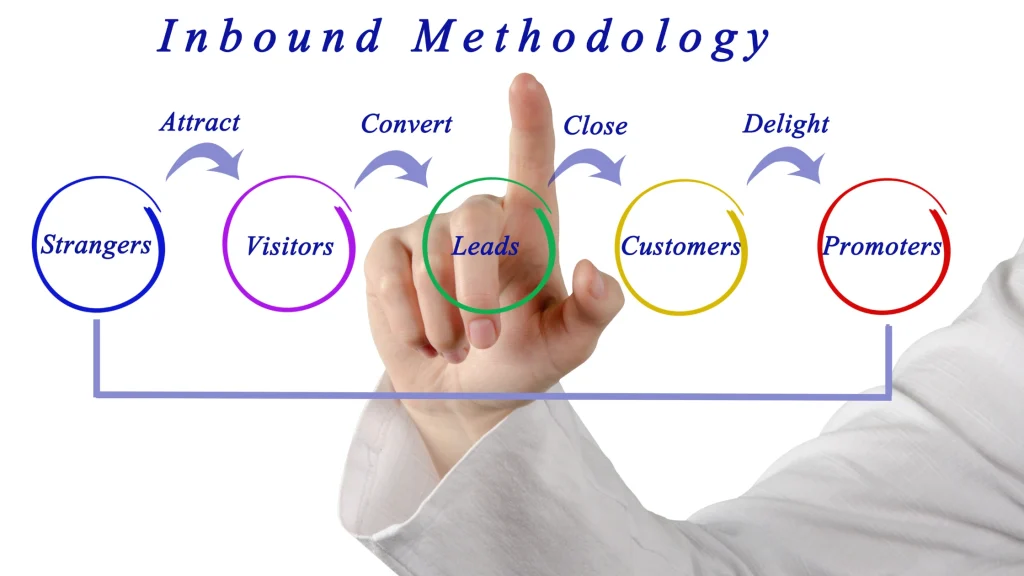Inbound vs. Outbound: Choosing the Right Marketing Strategy

Introduction
In today’s competitive digital landscape, businesses must do more than just reach their audience they need to connect meaningfully and effectively. This is where the choice between inbound and outbound marketing becomes crucial. While inbound marketing focuses on attracting customers through valuable content, outbound marketing takes a more direct approach, actively reaching out to prospects. This blog will explore the key differences between inbound and outbound marketing, weigh the pros and cons of each approach, and offer insights into finding the right balance for your business.
What is Inbound Marketing?
Inbound marketing is a strategy designed to attract potential customers by creating and sharing valuable content. Rather than interrupting people with ads, inbound marketing draws them in by addressing their needs and interests. Key components of inbound marketing include:
- SEO (Search Engine Optimization): Optimizing content to appear in search engine results, so it reaches people actively searching for information related to your industry or product.
- Content Marketing: Providing high-quality resources like blog posts, eBooks, and videos that address customer pain points and build trust over time.
- Social Media: Engaging with audiences on platforms where they spend time, sharing content, and fostering two-way conversations.
Inbound marketing emphasizes relationship-building, creating long-term connections by positioning your brand as a valuable, reliable resource.
What is Outbound Marketing?
Outbound marketing, in contrast, involves directly reaching out to potential customers through traditional methods and paid strategies. This approach includes:

- Paid Advertising: Using platforms like Google, Facebook, and other media to reach large, targeted audiences.
- Proactive Calls and Emails: Directly contacting prospects via phone or email to generate interest.
- Display Ads and Banner Ads: Using online advertisements on websites to boost brand visibility and generate awareness.
Outbound marketing is generally more immediate and impactful for campaigns with a short-term focus, such as product launches or time-sensitive offers, as it aims to reach a wide audience quickly.
Inbound & Outbound Marketing: Merits and Demerits
To help you understand how each approach can fit into your strategy, here’s a breakdown of the pros and cons of both inbound and outbound marketing:

When to Use Inbound Marketing
Inbound marketing is highly effective for businesses looking to build credibility, create brand awareness, and cultivate strong, long-term relationships with their customers. This approach is particularly suitable for:
- Nurturing Leads Over Time: Inbound marketing is ideal when a business seeks to engage customers continuously with valuable content.
- Building Brand Authority: By providing educational resources, your brand becomes a go-to source of information in your industry, building trust and credibility.

For companies with long buying cycles or those focused on providing high-value, complex products or services, inbound marketing is a powerful approach that aligns with these goals.
When to Use Outbound Marketing
Outbound marketing works well for driving immediate results, especially when businesses need to promote a new product, reach a larger audience quickly, or support short-term campaigns. It’s best used for:
- Product Launches and Promotions: Outbound marketing is great for getting the word out quickly, creating immediate visibility for your latest offerings.
- Building Initial Awareness: For new brands, outbound marketing can reach a broad audience, allowing them to establish a presence more quickly.
Outbound marketing is effective for time-sensitive campaigns and can be a powerful tool for engaging prospects who may not yet be aware of your brand.
Balancing Inbound & Outbound Marketing Strategy
For many businesses, combining inbound and outbound marketing yields the best results. For instance, you can use paid ads (outbound) to promote an in-depth guide or free resource (inbound), attracting quality leads who are interested in your industry. Here are some ideas on combining both:
- Use Outbound to Amplify Inbound Content: Promote valuable inbound content, such as blog posts or eBooks, through paid ads to increase reach.
- Create an Integrated Content Strategy: Publish educational resources to build authority (inbound) while running targeted ad campaigns to reach broader audiences (outbound).
- Balance Budget and Goals: Set a portion of your marketing budget for inbound (long-term value) and outbound (quick wins) to maximize the impact.
By strategically blending both approaches, you can build brand awareness quickly and nurture relationships over time, ensuring that your marketing efforts support both immediate and long-term goals.
Conclusion

Both inbound and outbound marketing have unique strengths that can benefit your business in different ways. Inbound marketing builds trust, authority, and lasting relationships, while outbound marketing delivers faster results and can increase your brand’s visibility quickly. To craft the most effective strategy, consider your business goals, target audience, and resources, and strike a balance between these two approaches. By understanding and combining the power of inbound and outbound marketing, you can create a well-rounded strategy that drives meaningful engagement and growth for your brand.

Very informative!! Keep sharing
Thank you so much for your kind words! Your feedback truly motivates me to keep sharing valuable content.